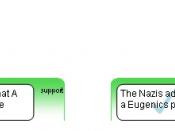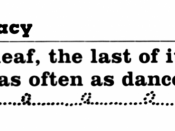Anytime a television is turned on, a radio program is listened to, or a debate is being carried out, there will always be an instance of some sort of logical fallacy. It is not always the intent of the speaker to be "lying" but more so to be persuasive. A logical fallacy is a reasoning error. There are several different types of fallacies but they can be split up into two different groups: fallacies of relevance and fallacies of insufficient evidence.
Fallacies of relevance are instances where an irrelevant assumption is used to defend a conclusion, whereas fallacies of insufficiency are examples of where the evidence presented in support of a claim is insufficient or weak (Fallacies).
There are several types of fallacies that fall under both of these categories. The most common of these seems to be a personal attack, or Ad Hominem. Ad Hominem translated literally means "against the man."
This argument criticizes ideas and facts by pointing out something about the person who had the idea rather than addressing the idea itself.
According to Dr. Michael C. Labossiere, the author Fallacy Tutorial Pro 3.0; there are two forms of this fallacy as shown below:
1. Person A makes claim X.
2. Person B asserts that A makes claim X because it is in A's interest to claim X.
3. Therefore claim X is false.
1. Person A makes claim X.
2. Person B makes an attack on A's circumstances.
3. Therefore X is false.
For example, if the marketing department was asking to spend a large amount of money on a new ad campaign and I did not think it was a good idea, I might say to my employee "of course you think that marketing serves a valuable purpose, your work is in marketing." The...


